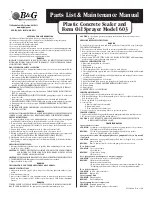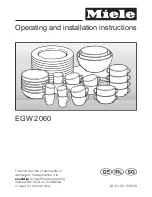
3-1
Panda iRes Warmer
M1110737 006
© 2007 General Electric Company, all rights reserved
Chapter 3
Operating the Warmer
__________________________________________
Basic Operating Procedure
WARNING:
Always set the brakes before placing a patient in the unit.
WARNING:
Do not leave the patient unattended when using the Panda iRes Warmer.
WARNING:
Check the patient’s temperature periodically with an independent monitor to ensure
the comfort and the safety of the patient. If the warmer is used for an extended time, it
is recommended that the baby control mode be used. When an alarm is silenced, close
monitoring of the patient’s condition is required.
WARNING:
Use of electrosurgical units or other electrical field radiating equipment can affect
the operation of the unit. Keep the patient probe lead as far away as possible from
electrosurgical cables. Do not allow excess electrical cables to be laid on the bed platform.
Use of electrosurgical units or other instruments that radiate electrical fields can cause
indirect heating, by several tenths of a degree of the skin temperature probe due to
absorbed electrical energy. When using these devices near the radiant warmer, operate the
warmer in Manual Mode for maximum safety and use a skin temperature probe to monitor
patient temperature. For added safety, you should consider use of the manual temperature
alarm found in the Setup menu.
WARNING:
The use of phototherapy equipment or heated mattresses may raise the patient’s
temperature. Monitor patient temperature using a skin probe.
WARNING:
Radiant warmers may increase an infant’s insensible water loss. Take appropriate measures
to maintain the patient’s fluid balance while caring for them in a radiant warmer.
WARNING:
Radiant energy can adversely affect blood components. When using intravenous tubing
systems for delivery of blood components to patients occupying a warmer, shield any
tubing with aluminum foil.
WARNING:
Radiant energy may cause more rapid urine evaporation, and may lead to inaccurate urine
diagnostic test analysis and inaccurate weight measurements. Frequent diaper changes
are recommended.
















































